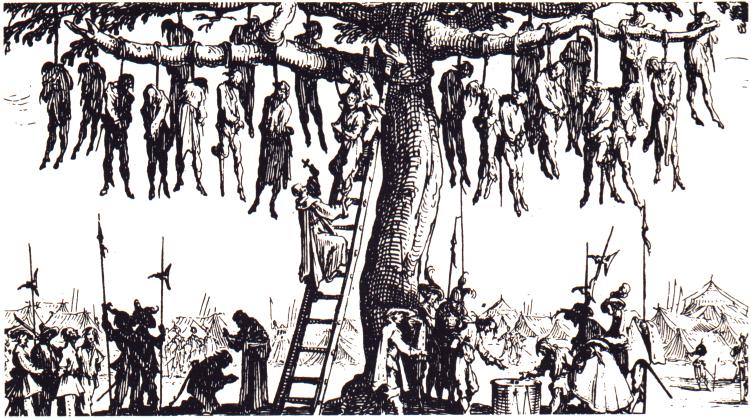
Your entries in Comments.


Your entries in Comments.
Ranked in ascending order of helplessness/need:
Your suggestions in Comments.
P.S. I see I forgot to post a 5 Worst list last Friday. Sorry.
Aaahhh, Oxford…

…except it’s not quite like that:
A group of men who abused teenage girls in a vehicle they called the ‘slagwagon’ have been jailed for a total of nearly 90 years.
The men – aged 36 to 48 – befriended vulnerable girls as young as 13 before plying them drink and drugs at ‘parties’ in Oxford.
The eight men – branded ‘predatory and cynical’ by a judge – have now been jailed for between seven and a half and fifteen years each.
I know what you’re thinking, but before you start guessing, I’ll do it for you:

Click on the link and scroll down to see just how prevalent this bastardy has become in Britain.
Me, I’m thinking along the following lines, rather than short sentences of imprisonment:

…although no doubt some of you will think I’m being too kind. Feel free to propose your own bloodthirsty ideas in Comments.
The story in a nutshell: woman approaches menopause, gets super-horny, needs to get laid three times a day to satisfy her raging libido. Why?
During the perimenopause, the slow countdown to infertility which can begin up to a decade before your periods cease, oestrogen levels fluctuate and fall.
But there’s a period in which testosterone remains relatively high. This is because, while testosterone peaks in your 20s, and then halves by the time you reach 40, the decline after that age is less dramatic.
At this point, when there are fewer hormone binding chemicals in the blood to dampen its effect, there’s effectively a testosterone spike.
As the Church Lady would say: “How conveeenient.”
And of course, everyone is all sympathetic because womanhood, instead of calling her a ghastly slag. Why do I feel so little sympathy?
“I learned that dating sites for married people were places to interact with potential partners without the harassment and judgement they received on other sites from those who view the issue of infidelity as black and white. I see the many shades of grey around the topic.”
So she was only interested in quickie knee-tremblers, not long-term affairs with married men. How noble of her.
Here’s the clincher: this foul woman is the editor of something called Erotic Review Magazine. So her elevated testosterone (if that’s what it was — I remain skeptical) and her impending divorce were coupled to her reading smut on a daily basis. What other outcome was possible?
And here’s the kicker:
“But in the future, when I’m partnered again, I will bring up any desire I have to stray outside that partnership.”
When? How about if ever, and I’m backing never. I foresee an unending string of “pump ‘n dump” encounters in her future.
Myself, I’m just curious what the grounds for her divorce were, or whether she was just being dumped by hubby for [insert your salacious reason here]. Whatever, she sounds like a dreadful, self-centered person, no matter how scientific and gyno-sympathetic her “condition” sounds.
So what to do when you’re working outside in sweltering temperatures, but the ‘Elf & Safety regulations forbid wearing short pants? You find a way around the rules:
The brickies — who were working in Chertsey, Surrey — were horrified by new health and safety rules forbidding shorts. But when they realised they could get around the ban by wearing women’s clothing thanks to gender equality regulations, they showed up for work in skirts and frocks. [emphasis added]
And because this story would be no good wifout pichurs:


I love stories like this. Fuck the bureaucrats.
When I first started posting online, I used a nom de plume (Own Drummer, in case anyone’s interested) because I was nervous where this whole thing would end up. Then a couple years in, I began using my real name to post under. I did this for three reasons: firstly, because I really didn’t (and still don’t) care what people think of me; secondly, because I thought it was more honest and lastly, because I believe in that First Amendment thing. And in the final analysis, using your own name to publish your thoughts can act as a brake on what you say to temper your speech — admittedly not so much in my case, but there it is.
Not everyone feels this way — in fact, most people don’t — and that’s fine; what works for me might not work for everyone, and so I support the right of people to maintain their anonymity, because there are many good reasons to do so: to keep your job (I myself lost one because of my fevered rantings); to be able to publish uncomfortable truths without fear of retaliation or punishment (especially under repressive regimes such as UC-Berkeley or Iran); to avoid causing hurt to family and friends, and so on. When people post comments on this website using pseudonyms, I respect their privacy and use them even though I might know their real names: they want to remain anonymous for whatever personal reasons, and I’m not going to compromise that.
Of course, anonymity can be abused (and often is) because as we all know, 9.99% of people are rancid assholes and anonymity can be used to cloak malevolence, slander and just outright boorishness (to name but three). Like all freedoms, the right to anonymity can be abused, but that’s the nature of liberty, isn’t it? Foul trolls can say unspeakable things just as courageous people can reveal wrongdoing, but to protect the latter we need to tolerate the former. It’s called the First Amendment Principle.
Needless to say, this noble sentiment doesn’t sit well with bastard government flunkies who want to control or lives and speech — for all the best and noblest of reasons, of course: national security, good taste, etc. — and so we have the latest example of this bastardy:
Digital IDs should be introduced to stop mob rule and end anonymity online, the security minister has said.
Ben Wallace, the MP for Wyre and Preston North and Minister of State for Security and Economic Crime, said bullying and grooming takes place on social media because people believe they can’t be identified.
He added that websites should be able to identify people online in the same way that banks do.
“It is mob rule on the internet. You shouldn’t be able to hide behind anonymity as much as you can now… If we’re going to make the internet safer, and cut out the abuse, we’re going to have to do something more about some form of digital identification.”
And of course, bossyboots BritPM Thing May had to chime in:
“We know that technology plays a crucial part in advancing gender equality and empowering women and girls, but these benefits are being undermined by vile forms of online violence, abuse and harassment.
“What is illegal offline is illegal online and I am calling on world leaders to take serious action to deal with this, just like we are doing in the UK with our commitment to legislate on online harms such as cyber-stalking and harassment.”
Yeah, it all sounds so reasonable, doesn’t it? It’s to protect us from mob rule, and child molesters, it’s for the childrennnn! So of course, countless millions of perfectly decent people have to have their privacy stripped away because of the actions of a tiny minority.
Predictably, the perfessors chime in:
Alan Woodward, of the University, of Surrey, told the Times: “I don’t think it’s technically workable. For those who persist in the vilest online behaviour, there are so many ways to mask their real identities.”
Which is true, of course. As we know with gun registration, criminals will always find a way to transgress the law or keep their nefarious activities hidden from official scrutiny; why should online registration be any different? Once again, the people most affected will be the law-abiding. That doesn’t seem to matter to these statist tools:
Anthony Glees, of the University of Buckingham, said: “This is do-able and it should be done. Anonymity on the web is a threat to our national security of the first order. Legal compulsion will be necessary and we should go for it.”
But why stop there? After all, if national security is involved… well, no sacrifice is too great (according to the State and this Glees person).
People get up to mischief in the anonymity of their homes too — bomb-making, child-beating (a.k.a. disciplining), un-PC speech, unclothed masturbation and who knows what other kinds of anti-social activity — so let’s monitor their behavior just as we monitor their online speech, why not?
It’s been done before — or at least, written about before:
The telescreen received and transmitted simultaneously. Any sound that Winston made, above the level of a very low whisper, would be picked up by it, moreover, so long as he remained within the field of vision which the metal plaque commanded, he could be seen as well as heard. There was of course no way of knowing whether you were being watched at any given moment. How often, or on what system, the Thought Police plugged in on any individual wire was guesswork. It was even conceivable that they watched everybody all the time. But at any rate they could plug in your wire whenever they wanted to. You had to live — did live, from habit that became instinct — in the assumption that every sound you made was overheard, and, except in darkness, every movement scrutinized. — George Orwell, 1984
And Orwell didn’t know about night-vision cameras, back then.
So here’s my response to those who want to strip away our online privacy:
Fuck you. Fuck all of you, you totalitarian bastards. Fuck you, your government departments, your sycophantic followers and the evil that lives in all State institutions, no matter their noble purpose or intent. Fuck you, fuck the lot of you. I hope you all die a painful, screaming death. — Kim du Toit
How’s that for “hate speech”, you evil bastards? And I’m not hiding behind a pseudonym, either.